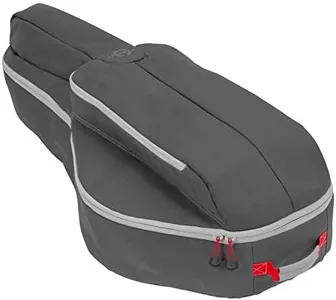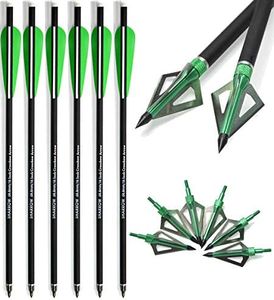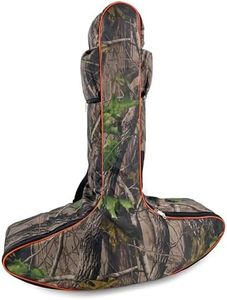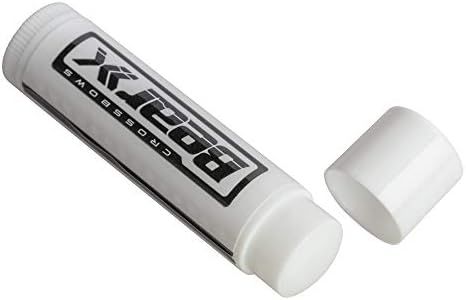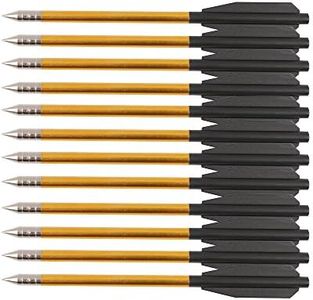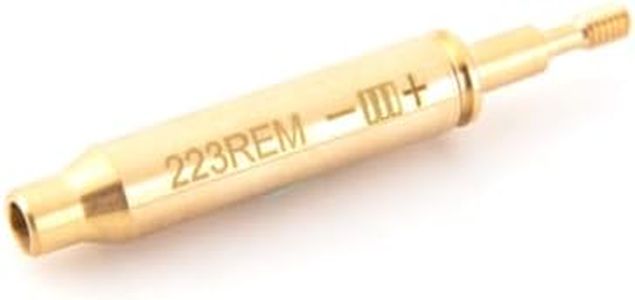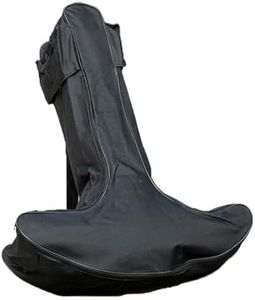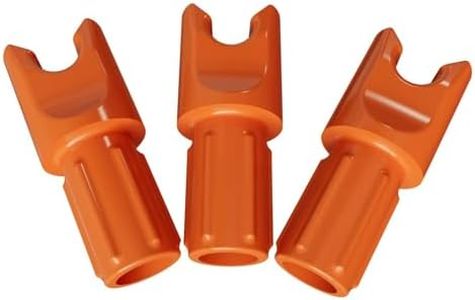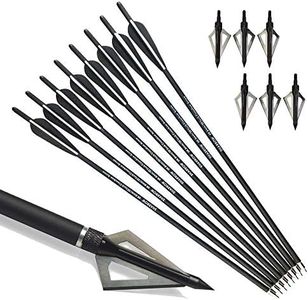We Use CookiesWe use cookies to enhance the security, performance,
functionality and for analytical and promotional activities. By continuing to browse this site you
are agreeing to our privacy policy
10 Best Crossbows
From leading brands and best sellers available on the web.By clicking on a link to a third party's website, log data is shared with that third party.
Buying Guide for the Best Crossbows
Choosing a crossbow can seem complicated, but it's all about matching the crossbow's features to your purpose, experience level, and physical ability. Whether you're using it for hunting, target shooting, or recreation, a good approach is to focus on factors that affect power, accuracy, ease of use, and comfort. Consider how you'll be using the crossbow most of the time and take your physical strength and handling comfort into account. Understanding a few key specifications will help you make a better decision and ensure you get a crossbow that feels right to you.Draw WeightDraw weight measures the amount of force needed to pull back and cock the crossbow, typically expressed in pounds. This is an important spec because it influences the speed and power of your shot—the higher the draw weight, the faster and harder the bolt will travel. Lighter draw weights, generally between 75-125 pounds, are easier to load and are suitable for beginners or younger users, often used for target practice. Medium draw weights of 125-175 pounds offer a balance between power and ease, making them flexible for most types of hunting and serious target shooting. Heavy draw weights, over 175 pounds, deliver maximum power and are usually chosen by experienced hunters targeting large game. To pick the right draw weight, think about your intended use and your own strength—if you want gentle practice shots, go lighter; if you're hunting large animals and can handle the effort, go heavier.
Arrow Speed (FPS)Arrow speed, measured in feet per second (FPS), shows how fast the bolt leaves the crossbow. Higher speeds result in greater accuracy over longer distances, more penetration, and better energy transfer to the target. Entry-level crossbows might shoot at 200-300 FPS, suitable for casual users and small game, while more advanced models range from 300-400 FPS, providing flatter trajectories and more reliable performance for hunting and serious competition. Crossbows shooting over 400 FPS are specialty models for experienced users needing the highest performance. When considering arrow speed, ask yourself how far you'll typically be shooting and what your primary target is—higher speeds are better for longer distances and tougher targets, while lower speeds are fine for close-range shooting or recreational use.
Size and WeightThe overall size and weight of a crossbow affects how comfortable it is to carry and use, especially during long periods or while moving through the woods. Compact and lightweight crossbows, sometimes under 6 pounds, are easier to handle, carry, and hold steady, which is ideal for smaller individuals or those who plan to move a lot. Medium-weight crossbows, around 6-8 pounds, provide a good balance of stability and ease of use. Heavier crossbows, over 8 pounds, often offer more power and stability when shooting from a fixed position but can be tiring to carry. Choose a size and weight that matches your physical ability and how much you expect to move around—if you need to trek long distances, lighter is better, but for stationary use, you might prioritize a heavier, more stable model.
Cock MechanismThe cocking mechanism is how you load and prepare your crossbow for shooting, and it directly impacts safety and ease of use. Basic crossbows may require manual cocking using physical strength, which can be challenging for some users. Others feature rope cocking aids, which cut the effort roughly in half and provide better consistency. Advanced models might include a crank cocking device, making it easy for nearly anyone to load the crossbow safely and consistently with minimal strength. You should pick a cocking system based on your strength and comfort level—if you're confident and strong, basic methods might be fine, but if you want more comfort, safety, or ease, look for crossbows with assisted cocking mechanisms.
Safety FeaturesSafety features reduce the risk of accidental firing and injury, which is crucial, especially for beginners. Common safety elements include auto-safety, which automatically puts the crossbow in a safe mode when cocked, and anti-dry fire mechanisms, which prevent firing when no bolt is loaded. Some have finger guards or safety wings to keep your fingers away from the string's path. When evaluating safety features, consider your own experience and who else might be using the crossbow—if beginners or younger users will use it, prioritize models with multiple built-in safeguards.
Stock AdjustabilityThe stock is the part that rests against your shoulder, and its adjustability can make a big difference to comfort and shooting accuracy. Adjustable stocks allow you to change the length or cheek height, helping shooters of different body types achieve a comfortable and steady stance. Fixed stocks are simpler but may not fit all users perfectly. If you have trouble holding crossbows steady or want more customization for comfort, look for adjustable stocks. If you're confident in your ergonomic fit, a fixed stock may suffice.
Noise and VibrationNoise and vibration after firing can alert game animals or make target shooting less enjoyable. Some crossbows come with dampening systems or special limbs that reduce sound and vibration. If you're hunting wary animals, quieter crossbows give you a better chance of staying hidden. For recreational shooting, this may be less important. Evaluate how important stealth is to your activity and pick a model with the appropriate level of noise and vibration control.

